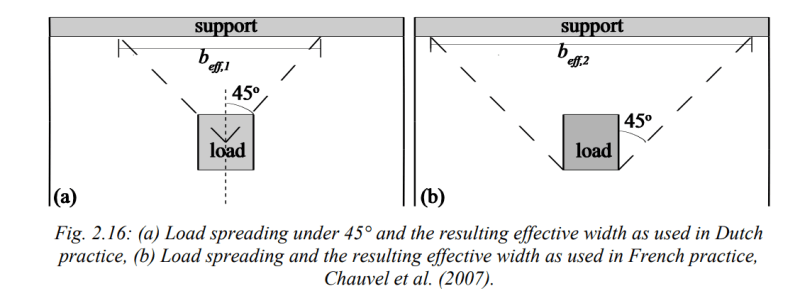Good morning,
I am checking a 5-ton forklift on a 8” slab cast on a 3” metal deck (formwork only).
By a strict read of the code (ACI 318-19), concentrated loads located close to the support (<d) have a critical section located at the face of the support for one-way shear.
By locating the front axle directly adjacent to the support (ie. 2” to the center of wheel), I get a very small effective width (using “French distribution method”), which seems overly punishing.
Where should I locate the front axle relative to the support to achieve reasonable results?
I was reading these articles:Link Link, and it seems that the most critical position occurs when the front axle is clear from the support by 2*d (due to arching), however these articles are tailored to Eurocode and I’m not sure if its appropriate to use with ACI (cl. 7.4.3).
Thank you.
I am checking a 5-ton forklift on a 8” slab cast on a 3” metal deck (formwork only).
By a strict read of the code (ACI 318-19), concentrated loads located close to the support (<d) have a critical section located at the face of the support for one-way shear.
By locating the front axle directly adjacent to the support (ie. 2” to the center of wheel), I get a very small effective width (using “French distribution method”), which seems overly punishing.
Where should I locate the front axle relative to the support to achieve reasonable results?
I was reading these articles:Link Link, and it seems that the most critical position occurs when the front axle is clear from the support by 2*d (due to arching), however these articles are tailored to Eurocode and I’m not sure if its appropriate to use with ACI (cl. 7.4.3).
Thank you.

